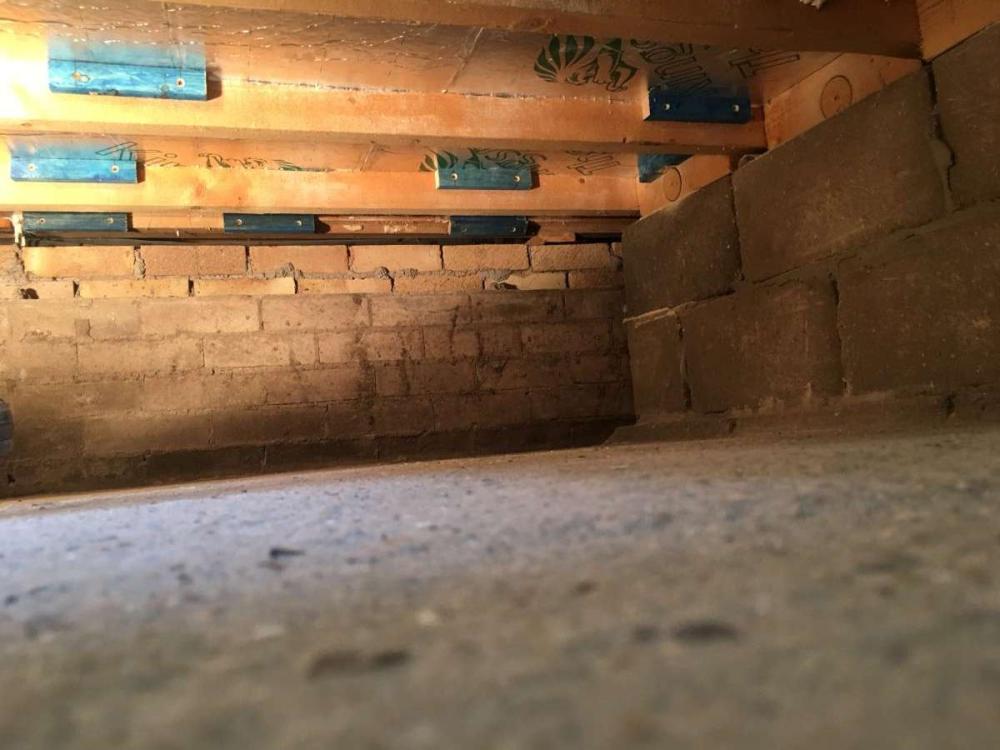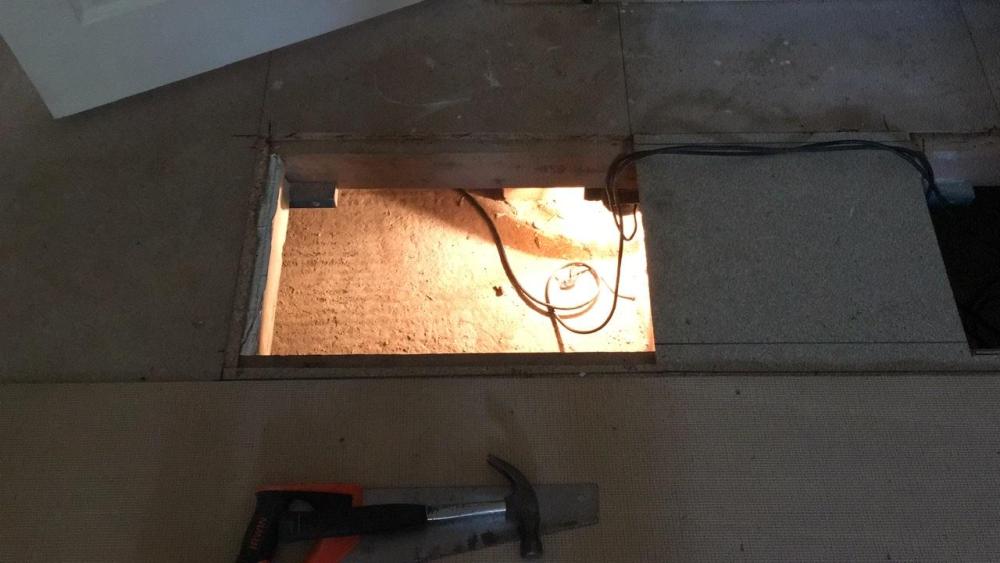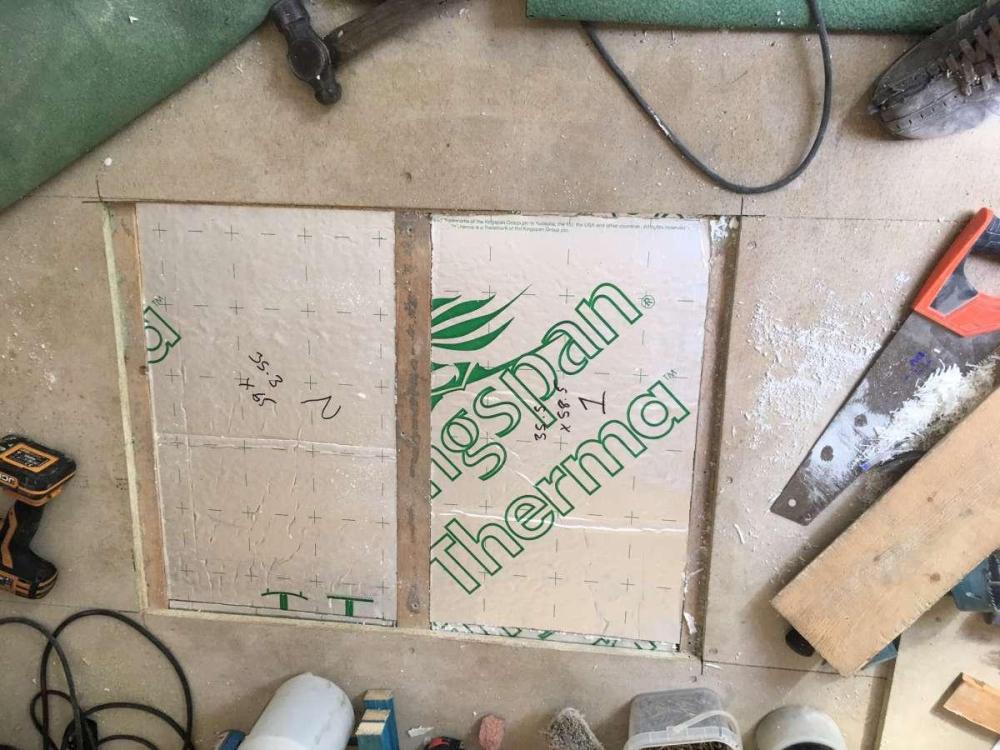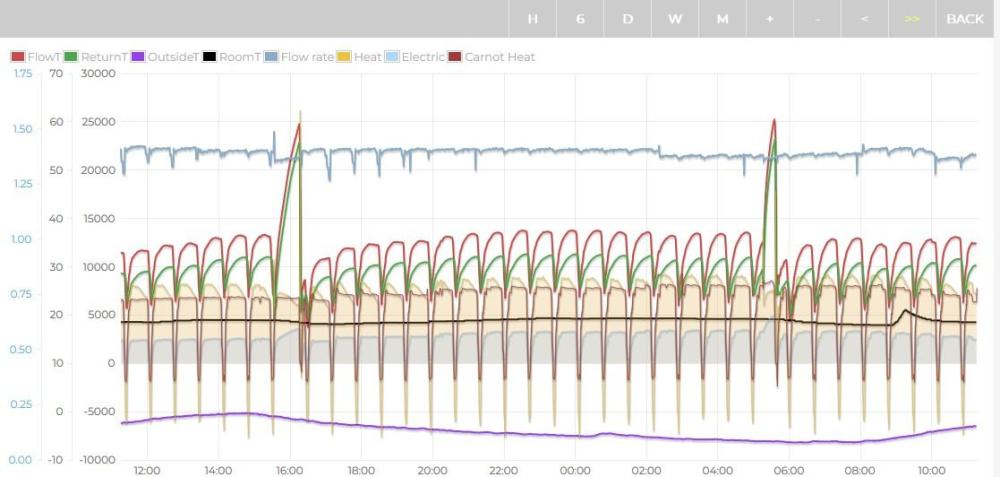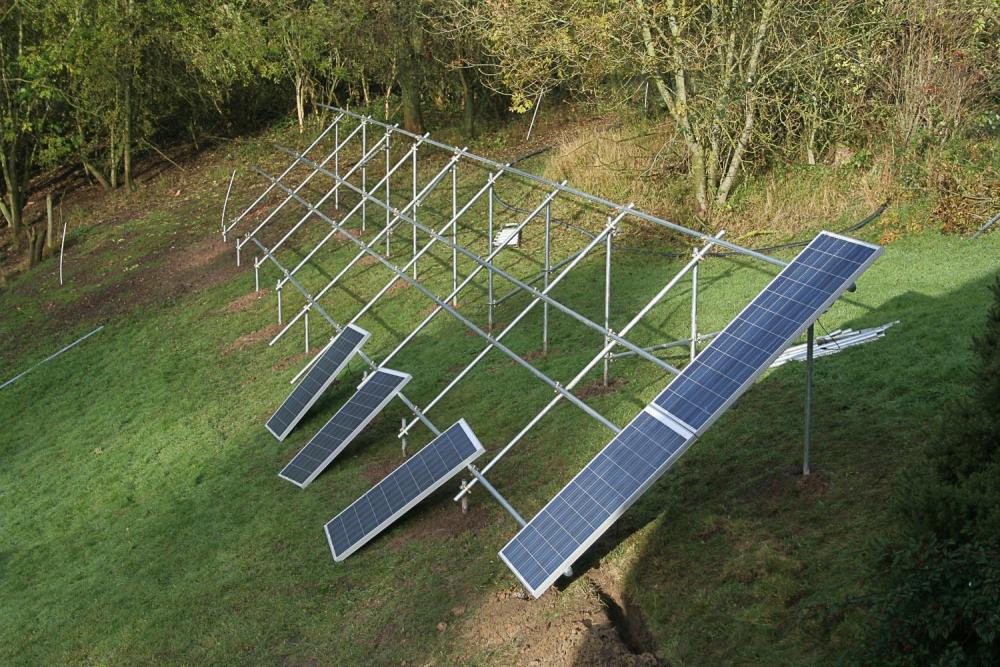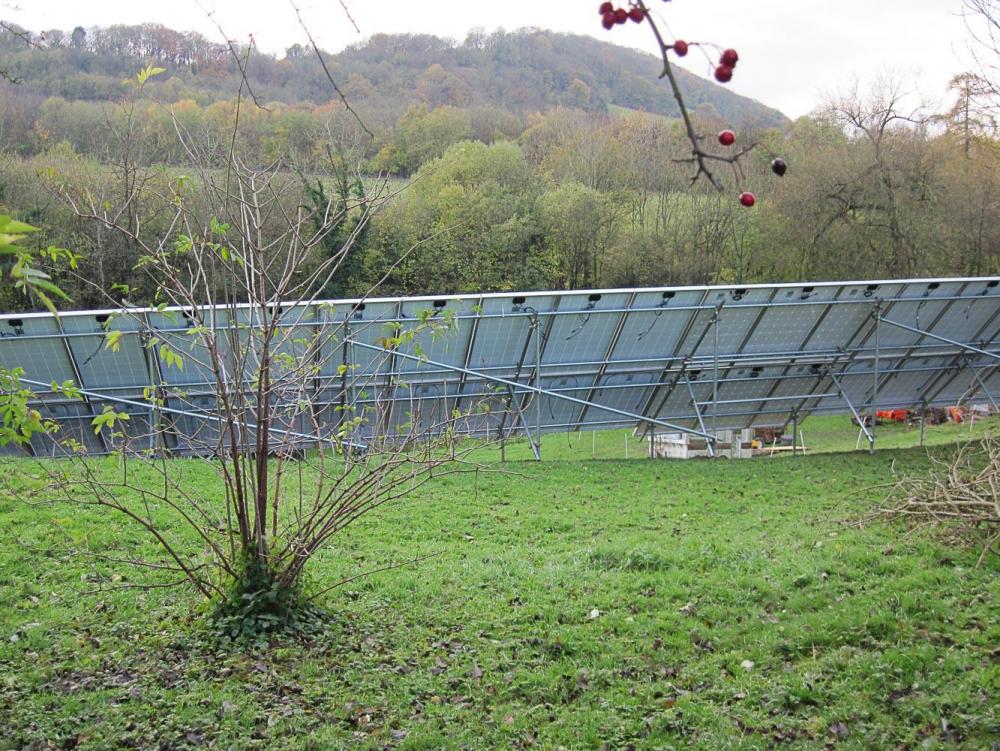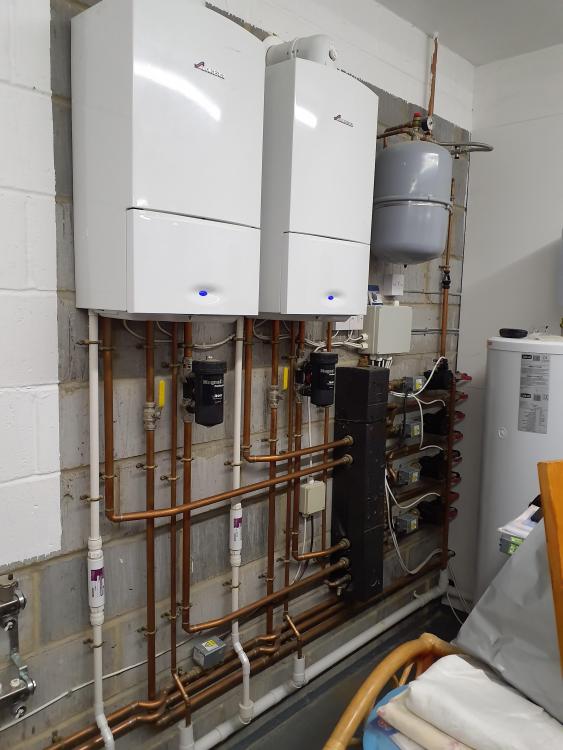Leaderboard
Popular Content
Showing content with the highest reputation on 01/30/24 in all areas
-
Finally the lender is happy with the builder! My mortgage advisor went above and beyond to help us. The builder also sent us lots of useful documents, all this managed to reassure them thankfully. So glad to make it to the next stage, now the land valuation. I'm sure this will be fine..3 points
-
So update... City fibre met me on site had a look and said they dont know why they put the cable up when its clear it was a building site. They've agreed to remove it asap. He was very apologetic, credit to them for admitting the error.3 points
-
Now 70 plus , built my own dormer bungalow doing all groundwork’s and drainage myself . Had a bricklayer and a carpenter to help with the brickwork and hand built roof. Also installed the plumbing , underfloor and central heating, but had electrics and boiler installed by qualified technicians.2 points
-
I did ours with osmo polyx oil after hanging. It's a bit of a faff working around hinges, but you can do both sides in one hit and don't have find space/time to lay them out/turn over for each coat. Very happy with the finish (rub down with a fine sanding sponge before and after coats), and no signs of any problem due to not treating the bits under the hinges or under the bottom of the door. I'd do the same again definitely.2 points
-
Relays, bloody relays. The Sonoff 4CH PRO R3 unit uses dry contact relays internally, but these are Golden GH-1C-5L relays that are an AC-only design, and so are not rated to drive 24 VDC control logic. ☹️1 point
-
You are correct there are a lot of settings, but I use water law and an external thermostat, and this temp has no bearing on the operation of my HP. initially my control was next to the cylinder, and always read 1.5-2 deg more than the thermostat that controls the house temp, and the HP worked as required. i.e. the system controller could say 20 deg, if my room stat was at 18 and my set point 19 the HP would be on. switching off at 19.1 point
-
I've got 3 ReoLink Security Cameras at home. The setup is pretty dumb. They each do simple motion detection and record on a local SD card when the detection fires. The videos are then FTPed to a backup service just in case some thief smashes the camera and takes the evidence. I run a crontab script that purges old data recordings to keep the max FTP share size to a limit (only about 4 days). The biggest triggers are (i) moths and spiders' webs at night (they love the IR), (ii) birds (iii) plants etc. blowing in the breeze. I've never got clever and the thresholds are so low that I will probably miss recording any genuine intruders. 🤣 My son-in-law sets a far looser detection threshold on his cameras and so captures more, but he uses one of these to classify each recording and discard any that doesn't have a person or a moving vehicle in them. The system also picks a good frame to use as a viewing thumbnail of the junk, and he has a nice interface integrated into HA where he can quickly browse these and trash the boring ones. I am still not sure of whether doing the smart postprocessing is worth the hassle. I might get around to doing something like this as a project some day.1 point
-
Hi - joined this forum as we are embarking on a self build. Based in nottingham and hope to start on the build later this year. Looking for advice, information and moral support!1 point
-
Just one observation, on the drawings, you have 2x "Bedroom 2" s - even though they are on different floors, this may will cause confusion in the build / fit out.1 point
-
Vaillant also released a 4-pipe boiler the ecotec exclusive but I don't think it's as good as the standard ecotec Most Viessmann installs I see from good installers who have done the Viessmann courses generally don't ever install their systems with room stats and the boiler is run fully on weather compensation, this is what Viessmann generally recommend unless the property is not suitable I beleive weather compensation is mandatory in Germany and Holland, it seems we are way behind when it comes to heating in this country and our installers are generally very poorly trained.1 point
-
You haven't said how big you service void is? you need about 50mm to get lights in, but if you just want cables you only need about 25mm1 point
-
A two pipe boiler can of course be set up to do this and you can still gain the benefits from PDHW. The problem with 2 pipe is that many boilers don't provide the functionality to output two difference temperatures as it's all based on CH flow temp. I just installed a Vokera for a customer which seem to be flying off the shelf because the company isn't affected by the CHMM and this boiler had single wire switched live only, not even modulation capability, but the customer just wanted a cheap boiler. Those that do have separate temperature capability, like many Worcester's need an additional diverter valve assembly to be installed into the boiler -not a great issue but most installers just don't bother - and then you need specific manufacturer controls. Likewise with Ideal, there is a switched live you can use for PDHW but Ideal will say that this can only be used if weather comp has been connected, although I do use it for PDHW installs and it does actually work. The Ideal Halo Heat & System controller is set up for priority hot water as is the Honeywell Evohome control that uses opentherm to increase flow temps. This, I think highlights the problem - it becomes quite messy unless the boiler manufacturer specifically supports and promotes the solution. The difference with the Viessmann 4 pipe system is that you do away with the need to install separate diverter valves and pump (except for a cut-out 2 port valve to the cylinder on some unvented cylinders). You can also use the boiler expansion vessel & prv for the unvented cylinder. Controls also get wired directly into the boiler such as the cylinder temp sensor so you can in many cases get away without having to use a wiring centre at all. It all works in an integrated way and less time to install. Control wise, you can simly use weather compensation or if load compensation if preferred, you can use Viessmann Vicare which, because the system boilers have wifi installed, you connect straight to the boiler. But if I want to, I can still use any other controller I want and still have the means to get priority hot water, even if the controller itself doesn't support it.1 point
-
>>> if there is a design change from another consultant (e,g, mechanical consultant changing plant details) i don't commence with my re-assessment until i have had a chat with the end client (who is paying my bills) in relation to the design change/implications and their agreement on my additional fee (where its required). <<< Yes, that's what you would expect grown-ups to do. It suggests both the SE and the contractor are at fault for not getting the cost increase agreed in ample time. Leaving it until the last minute doesn't count. So, both were either negligent or devious. The SE didn't apparently have anything to gain which suggests negligence, the contractor could be either. It could be that both were negligent though and you have still ended up with the right solution, just 'cos RC was the right answer in the first place. But that suggests the SE made a misjudgment to begin with.1 point
-
What does this "4 pipe" system do to improve efficiency? My ASHP is only 2 pipe (as I think they all are) and it only ever does DHW or Heating (with priority DHW) and runs both at different temperatures. It can be plumbed with a 3 port 2 position valve (not mid position) or as I have, with individual 2 port valves. The only disadvantage of the 2 pipe I can see is when it switched from DHW to heating, there can be a slug of water in the pipe at DHW temperature sent to the UFH (but the mixing valve on the manifold stops that being a problem) I fail to see what magic improvement a 4 pipe system can bring and why a heat only 2 pipe boiler cannot be set up to only do DHW or heating with priority DHW. That is more how you wire the controls than how you plumb it (as long as you avoid using a 3 port mid position valve)1 point
-
Also i would be inclined to ask on who's authorisation the works additional SE works were conducted under. I am a consultant in the building industry and if there is a design change from another consultant (e,g, mechanical consultant changing plant details) i don't commence with my re-assessment until i have had a chat with the end client (who is paying my bills) in relation to the design change/implications and their agreement on my additional fee (where its required). It sounds like the SE got the redesign request from the Basement company, the SE may have assumed that the Basement company had the authorisation of the design change from you, however they didn't talk to you and get authorisation from you (the bill payer) of agreement of additional works. This is assuming that there was a fixed scope of works for the initial design and it wasn't a rolling hourly rate contract. I would check the SE quote as i would like to think that its a fixed fee scope with hourly rates for additional works, but has a statement such as 'additional works will not be undertaken without written approval'1 point
-
To which add legal costs, another SE for the continuation of the project and dealing with bco. I'm not saying just to pay it, because I don't know the circumstances. But you must write to say what your complaint is and why you blame them. If you are right, a boss may step in to resolve it. Writing that letter will clarify your argument....it's basically what you might end up reading to a court.1 point
-
I’ve just osmo oil my oak doors, one coat before fitting to protect the grain from picking up dust, and a second coat once fitted. absolutely no chance of drips if you apply lightly as it says on the tin, and then use a lint free cloth to rub it in and spread evenly.1 point
-
Thanks Mab, I'm not sure these windows are the same. The rubber sits outside the frame, and there seems to be a frame within a frame. The inner frame is the one which holds the glass. I'm hoping I can remove the outer frame as it looks like that's the one which allows access to the pane.1 point
-
The reason we didn't do that is 2 coats of Osmo oil each side a day apart and 2 days to dry before you can turn the door over to do the other side = a week per door. You either need a lot of space and a lot of tressles (which we didn't have) or a lot of time to do them sequentially. Obviously painting them flat means no chance of drips.1 point
-
Yes, but there’s a big difference between ’paying 300/mo’ in a direct debit because the energy company have decided that’s what they want odd you, and actually using 300 quids worth of electric. Most people haven’t actually got a clue how this stuff works, hence why I said what I said.1 point
-
Use a credit card (not debit) for the consumer protection?1 point
-
Get a 32A commando socket fitted in your temporary power box and plug it into that.1 point
-
Not @Mike but I have implemented a very simple script on my Shelly 3 Pro to sequentially power the pump and heater in my temporary Willis UFH based on receiving a "heat demand" signal from the house controller over Ethernet. It works well enough but it's only a toy example. I haven't yet had time to see if I can send it temperature data from an external source so it can manage the heating all by itself. For what it's worth I'm in the "avoid single source" camp, and strongly prefer open standards with more than one vendor support. (And can't yet see the benefit of paying extra for many of the "smart" applicance currently available) My current plan is to aim for a complete UK/EU based COTS hardware solution where I trust the UKCA/CE marking and write the necessary software to manage interfaces and provide a few algorithms should I need to, avoiding any language that can't count properly and can't make up its mind how it works from version to version. So far I've got DMX for lights working pretty well using tablets and phones as switches, RS485 based Modbus pulling data from the solar inverter and a very odd RS232 link to control the MVHR - it seems Vent Axia didn't implement any meaningful software beneath their "BMS port", so I have used the (well documented on GitHub) option of getting a computer to pretend to be a remote control. Next is to look at Modbus controls for my preferred Samsung heat pump. The rest should be temperature and pressure monitoring and there are plenty of ways to do this. It would appear that for the basic functions I want to end up with there is no particular need to control discrete relays - data based comms is doing the work so I am relatively free to use whatever automation software is around or write my own. I may change my mind as to the requirement for controlling discrete relays when I look again at how to reconcile the excessive hot water demands vs small space heating requirements... But right now I am calling it a win to have most of the need to switch hardware directly designed out.1 point
-
Even the very best old welsh slate degrade over time, take the advice above and go with all new, working with old slates or tiles is horrible and only worth it in a conservation or listed building scenario1 point
-
Hi and welcome. Not an expert in any of your questions somebody who does should be along shortly.1 point
-
Can you not wrap air tightness tape around the box before fitting? then fit and seal cable penetrations1 point
-
They are a great solution - I'm using similar here in France. However, although I think that a single UK switch / socket screw centres are compatible, I suspect that a double wouldn't fit - though worth an experiment. However there are some EU manufacturers that make UK style sockets to fit round EU back boxes (pretty sure Jung do, for one) that you may be able to import / find in the UK.1 point
-
Instead of taping around the wallsockets, I would be using mounting boxes like these: https://www.eibabo.uk/kaiser/airtight-double-socket-flush-mounted-box-149x80mm-d-2mm-1656-21-eb10312038 I do agree however with others in this thread that the draft should not be there to begin with.1 point
-
Same thing. Lime is an example of a biocide (like bathroom paints, anti mould sealants etc) but relying on them internally is poor practice in my opinion, especially in a new build. Moisture accumulation to the point of providing a happy environment for microorganism growth is the thing to be avoided and this is done simply by tipping the scales in favour of "drying" rather than "wetting". Airtighness has a very big part in this as it's internal vapour laden air blowing into the structure through cracks and holes that allow almost all moisture get into a structure. Lime added to a parge coat will greatly assist it's flexibility reducing the cracking and enhancing long term airtighess. Lime even has some self repair tendencies but my gut tells me this is only really a factor in high moisture environments.1 point
-
When roofers are removing the slates they will be scrap. If they take care to remove carefully it could be twice the labour, so twice the cost! The same with battens. If it is going to be a habitable room after the work is done then it is well worth doing it now for piece of mind, because a water damaged room is a lot more costly to repair than a water damaged loft1 point
-
They were probably that colour originally, and will fade and attract moss, but could be a clash for few years. If you can demonstrate that the original tiles are, for example, Redland ' heather' then I don't think you can do better than use the same, even if currently brighter. Sell it to the planner as an upbeat proposal of doing what's best.1 point
-
You may well need to submit a Variation of Condition (Section 73) application and include samples/details of the new tiles. The determination process can take around 8 weeks and fees will also apply. However and in the first instance, get in contact with the Planning Officer and/or Listed Building Officer.1 point
-
I did the same in the Autumn of 2022 I purchased 57.6 m2 of Kingspan foil backed PIR in 75mm because the pack size worked for the area I needed to do and the cost was £300 cheaper than 80mm, 70mm was more expensive by £100 and I'd only save £30 if I went down to 60mm Cost was £1024 House has a suspended ground floor with a 2 to 3 ft crawl space (concreted) - There is an air brick every 5 bricks all round the house so very good circulation under there. I have an access point in one room - most rooms are either tiled or overboarded in 18mm Oak so ripping up the floors and doing from above wasn't an option - and there are gaps in supporting walls under doorways throughout the crawl space. It took me about 3 months to do the whole ground floor, I'd go under and measure up an area numbering the gaps between the joists and which was the narrow end (N) and wide end (W) - none of them were perfectly parallel which actually made life easier so my measurements & corresponding notes had to be good - come up for air and cut the boards to suit the area and then slide them down into the crawl space on crawler board - push them round and start to fit them as long as you used the taper to your advantage you could get a really snug fit I held the boards up with 25mm treated tile batten - I did have some expanding foam for any gaps but really didn't use much at all Not a job I want to do again but made a massive difference to floor temps, room comfort and heating bills1 point
-
There's the problem. There is no airtightness layer as such specified. Just insulation, and a vague hand-waving wishful thought that it might stop drafts too. Do you have an overall airtightness goal? What did your SAP or MCS or PHPP heat loss calcs use? Are you installing trickle vents or MVHR? This determines if your ACH goal is a min or a max allowable value. Don't beat yourself up on this one. Truth is the vast majority of architects have bugger all idea about this stuff. As a client with your head screwed on, your both more motivated and more likely to chase these details than they are. Sad but true.1 point
-
Building houses is not really a zero sum game, you're never going to get it perfect without extensive time, money, stress & micro management throughout the build...and corners (!) will inevitably be cut & missed. There is also the law of diminishing returns over practical vs cost effective vs end result. These cold snaps have made me realise we have sizable thermal bridging along a flush sliding/patio door in the kitchen.... 8m worth (!) which is really annoying because I was fastidious throughout at trying to catch everything, but work travel meant I was away when they screeded the kitchen area & didn't ask them to install some insulation on the inside of the frame prior to screeding.......but.....I was there to suggest dozens & dozens of other things to boost air tightness/insulation above & beyond default, and I caught dozens more that tweaks improved it. That gives me the comfort we are multiples more improved in quality of build then your average new build, and with upgrading insulation & air tightness throughout, that multiplies it again,....and Ill never be disappointed with ''significantly above average'' even if we aren't at the extremes of the top end! One thing I'm not doing though, is buying a thermal camera.....because that WILL drive me insane! Ignorance is bliss, and with global warming.... meh, we wont need any heating within the next few years!1 point
-
Depends what you mean by proper data. A defrost energy calculator has recently been added to the Open Energy Monitor heat pump app, so you can see data from lots of monitored systems at https://heatpumpmonitor.org/ There's a discussion on defrosting at https://community.openenergymonitor.org/t/ashp-sizing-for-freezing-conditions/24802/60 My system shows a calculated energy loss of 7% for defrosting, but these are quite extreme conditions. (-6C last night and 94% rH.1 point
-
Materials aren’t more expensive in the SE relative to say Scotland. I bought stuff on-line from all over England cheaper than I can get it locally. Local builders merchants trade on convenience and the ability to same day/next day urgent materials. I’d also say labour seems relatively consistent across most parts. The biggest difference is land cost.1 point
-
Did you have an AT test? Parge needs to be done before joists / wall plates go in / on, and before floor ( deck ) boards go down, to get to all the areas that are often overlooked. This kind of detailing is why one project just got 3.02 ach and another 0.88. If going for wet coats vs dot n dab then the parge can just be done to get the interior to a point where the plasterer is laying onto just a ribbon of parge and that will be a top job. To achieve air tightness you need to understand all the places which get overlooked and know where to focus your attention. Very easy to get “almost right”, which is basically pointless starting at all.1 point
-
PVGIS will give you average daily amounts by month, as well as total annual yield. You can play with slope and orientation to give you a good idea of the best angles to use. In fact it looks as if the new PVGIS 5 will give hourly outputs, but I haven't tried it. http://re.jrc.ec.europa.eu/pvg_static/en/intro_tools.html#PVP I'm not convinced by east/west splits because in the winter there just isn't any sun from those directions and in the summer you'll probably be generating too much anyway. I choose about 45 degrees slope and SSW orientation ('cause that's the way the bank faces). I made a frame of scaffold poles, as the commercial systems were too expensive, and I wasn't convinced of the longevity of wooden posts. Used U-bolts to attach the panels to the scaffold poles, drilled holes in the frame for them.1 point
-
>>> So for me it doesn't make sense for this to be refused Ah, you were not expecting the regulations to make sense, surely? You do know that we did away with all common sense in the '60s (and it was rarely used then)? Obtuseness and fragile, opaque and confusing laws are the order of today. Welcome to 2024. >>> the proposal exceeded the building area of the original building that was there 15 years ago? Sounds like you are falling foul of: Conservatories (including previous extensions) and other buildings must not exceed 50% of the total area of land around the original house. Sheds and other outbuildings must be included when calculating the above 50% limit. Given that: The term ‘original house’ means the house as it was first built See e.g. https://ecab.planningportal.co.uk/uploads/miniguides/conservatories/Conservatory.pdf Perhaps you can work backwards to figure out he max sized conservatory you could build under PD rules and then see whether that works for you? Or go with the awning if you prefer - as that doesn't 'count' at all? Otherwise, a full planning application if you're set on the initial size you have in mind. Was the LPA guidance formal response to a pre-app or a confirmation of PD rights ('certificate of lawful development') or what?0 points
-
Yes, to become an installer all you need is a Gas Safe certificate, or if employed ACS qualification. None of this training covers efficiency in systems and only recently has low temperature system design and wiring controls been included, but at a basic level for sizing boilers only. It's on the installer to train themselves as few of the bigger companies invest the money. But then there is the issue of the marketplace. If I quote for a boiler to be properly sized, set up and controlled, it will cost more than the installer who chucks it in over a few hours and runs off to the next job, all booked online through one of those fixed price cheapo websites that are cropping up everywhere. I was contacted by one of them offering me a fixed rate of £900 for install of boiler and the installation of 9 radiators all while I have to provide vanof minimum age, equipment, insurance etc. - yeah, right! But then you also get those that charge a fortune to install a complex system that doesn't work at all, just like this one I've got to go and sort out. You can't see it in the photo but the installer has put in 3 pumps on one flow pipe from the LLH all teed off a 22mm pipe. Heating is on constantly but relay only and no timers for anything, plus none of the rads work as they should while both boilers merrily cycle away. Oh, and it's all in a garage with no pipe lagging anywhere - the garage is toasty! And @Adsibob thinks he's got problems..😉0 points
-
0 points











